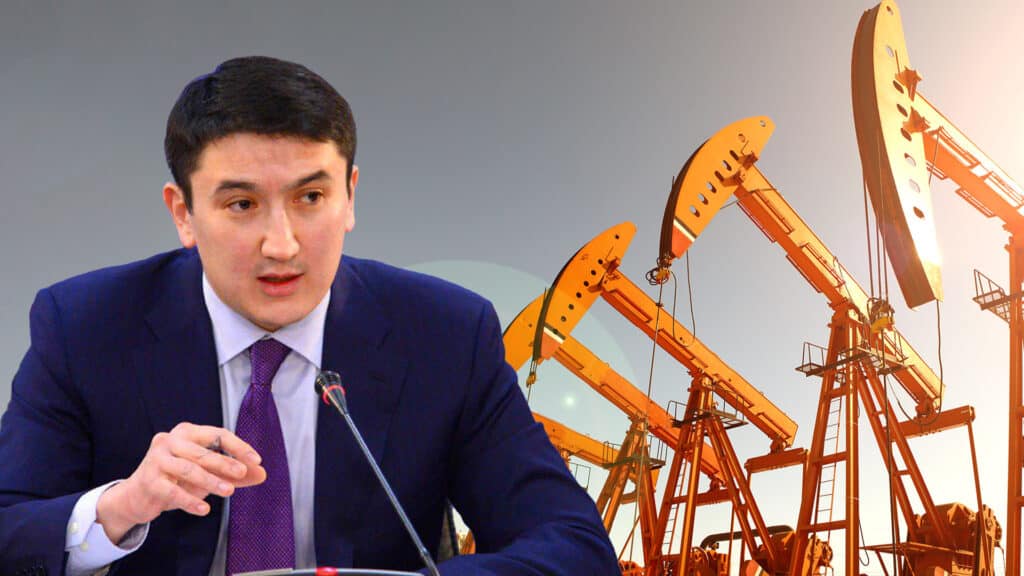Kazakhstan plans to expand its oil potential

According to Magzum Mirzagaliyev, the chairman of the management board of KazMunayGas (KMG), Kazakhstan’s oil potential might be expanded at the expense of large new oil fields.
As he noted, the exploration rate of Kazakhstan’s subsoil is just 24%. No new oil fields were reported over the past years as the national oil company’s reserves were increasing at the expense of additional exploration of already existing fields.
Currently, KMG is exploring five fields: Mugodzhary in the Aktobe region, Berezovskoye in the West Kazakhstan region and several fields in the Mangistau region. This year, the company is going to complete its seismic research of the fields and interpret the obtained geological data. Some foreign investors have already shown their interest in acquiring this data.
«In addition, KMG plans to drill three exploration wells this year. We will drill one well at Turgai Paleozoic in the Kyzylorda region; the mobilization of necessary equipment has already begun. We want to start this work in the middle of this year. We hope it will happen but let’s not make any predictions,» Mirzagaliyev stated.
This year, KMG also plans deep subsalt drilling in the Karaton Subsalt structure in the Atyrau and Mangystau regions. Furthermore, the company has scheduled the drilling of a well at the Abay field in the Caspian Sea in conjunction with Italian Eni.
The oil company is going to allocate its own money for the exploration of Turgai Paleozoic, while the Russian Tatneft, which has acquired 50% shares of Karaton Operating Ltd. from KMG, is expected to finance exploration of the Karaton Subsalt site on its own, Mirzagaliyev noted.
«We are planning to drill a 5,500 meter-deep well at Karaton Subsalt and more than 5,500 meters at Turgai Paleozoic. We believe that we can find something down deep depth,» the chair of KMG said.
Despite optimistic forecasts, two big operating oil fields controlled by KMG – Uzen and Karamandybas – have reported a decline in oil production. The output is expected to increase to 5.2 to 5.5 million tons per year once the rehabilitation project is over.
«In 2022 and 2023, together with scientists and engineering companies, we developed a project aimed at boosting oil production. We approached the government with an initiative to lower the mineral extraction tax. This is necessary to allocate more funds for the rehabilitation project. We’re also going to co-finance this project. We will drill horizontal wells within the project helped by up-to-date equipment and revised water injection technology. The government has supported this initiative,» the head of KMG said.
Oil production in the Uzen field is complicated by frequent power failures. This causes oil congestion and all the work stops. To solve the problem, KMG and Eni want to build a 247-megawatt hybrid power station that will generate energy with the help of wind, the sun and natural gas.
KMG also faces some problems with its projects in the Caspian Sea. It hasn’t discovered new oil fields in the sea for years. For instance, its well on the Zhenis site turned out to be dry. Before that, the company declared some other sites such as the block «N» unpromising. At the same time, there were some discoveries at Kashagan, Kalamkas-Sea and Khazar. KMG and Russian Lukoil have already launched active exploration work at the latest site. Kazakhstan’s national oil company wants to produce its first oil here in 2028 or 2029.
«Work conditions on the Caspian Sea are tough. The sea is very shallow and well-known for extreme temperatures: it’s very hot here in summer and very cold in winter. The sea might even be covered with ice. All of this increases the cost of our projects. This is why, following the instruction of the president, we’ve developed an improved model contract. It is aimed at promoting the exploration of difficult oil fields including those in the sea. Thanks to this model we were able to attract Lukoil and create a joint venture for the development of Kalamkas-Sea, Khazar and Auezov. I do not doubt that the Caspian Sea has a great potential that is far from being exhausted. That is why the geological exploration in the Caspian Sea will continue,» Mirzagaliyev said.

